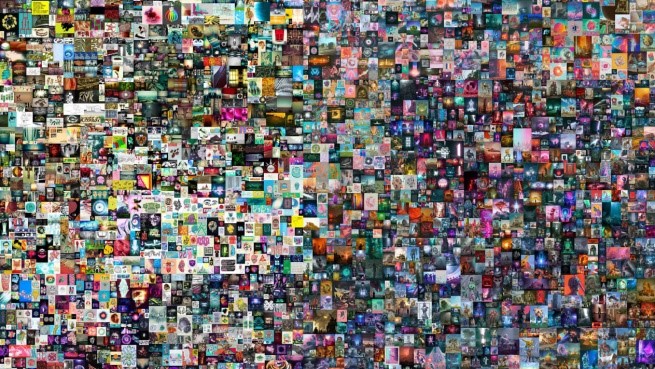A Whole Flock of Canaries
Back in 1911, British coal miners started taking canaries into the mines. Because of the bird’s sensitivity to carbon monoxide, an ill or listless canary would give miners warning. The practice continued until 1986.[1]
So began the expression “a canary in the coal mine” to denote a warning of imminent peril.
As students of the markets, we are beginning to see a flock of ailing birds everywhere. They warn not just of market weakness but potentially of market collapse.
Canary #1: The Afghan Collapse
The markets don’t like political instability. The recent fall of the Afghan government wasn’t supposed to happen. It shares many patterns with other intelligence embarrassments like 9-11 and Pearl Harbor.[2]
Eleven thousand U.S. citizens remain stranded in Kabul. What happens if just one of these American citizens ends up dead, captured, or jailed? The market won’t like it.
Not many know it, but Afghanistan has the world’s third largest supply of rare earth elements—critical to satellites, DOD weapons systems, and other high-tech systems. China has already made it clear that it will be the Taliban’s new big brother, so these rare elements will probably be added to China’s already monopolistic supply.[3]
Canary #2: The FED and Transitory Inflation
With today’s release of the Fed’s June 2021 minutes[4] we learned what transitory inflation might look like. Of course, further important inflation data will come in July,[5] but the minutes provide further detail on the Fed’s thinking.
“Transitory” May Mean About 6-9 Months
Despite using the term transitory for our current 5% inflation,[6] the Fed hasn’t precisely defined the term. According to the notes, the Fed generally expects elevated inflation for the remainder of this year, but moderating into 2022. Thus, elevated inflation might linger for another several months. Not all Fed policy makers share this view, some suspecting inflation may last into 2022.
To some degree, the Fed is also keying off market expectations. These suggest higher inflation in the short-term, but without much of an impact on long-term expectations after a year or two.
Base Effects Matter
The Fed believes that base effects are one important driver of the current surge in inflation. Last year, at around this time, inflation was subdued. But in 2021, we are seeing inflation catch up with last year’s unusual drop. Though inflation may remain elevated, this base rate effect will cause inflation to begin to calm over the coming months, just as comparatively, inflation picked up off low levels toward the end of 2020.
Supply Bottlenecks
The main driver of inflation is supply bottlenecks as the economy reopens. Paired with robust consumer demand, clogs in supply pressures prices upward. Again, the Fed sees these unusual disruptions to the economy moderating into 2022 as global supply chains work out their current issues.
What Could Change the Fed’s Outlook
Indeed, even now the high rate of inflation surprised many on the committee. The notes stated: “The actual rise in inflation was larger than anticipated.” Despite the surprise, however, the Fed doesn’t appear too concerned just yet.
Given that base rates serve as a key driver, if inflation doesn’t show a downward trend over the coming months, that may prove a concern for the Fed. While inflation may be high for a while, if we aren’t heading into a rate far closer to the Fed’s 2% inflation target by early 2022, that too will be a concern for the Fed’s transitory-inflation thesis.
If inflation doesn’t ease, monetary policy might have to adjust. The market won’t like higher interest rates, and investment strategies will have to adjust. That adjustment might cause some angst.[7]
Summary
Just because prices are going up doesn’t mean that inflation is. Inflation, after all, is the rate at which prices are advancing, not the fact that prices are rising in themselves.
It makes no sense to claim that “transitory inflation” includes all versions of the world in which inflation does not stay at, or make, new cyclical highs on a sequential basis.
In this sense, recent curve flattening and a sustained rise in short-term rate expectations could also be a result of the bond markets discounting a world in which inflation stays high enough to prompt policymakers to withdraw policy stimulus quickly enough to dent growth and tighten financial conditions.
The amount of time spent by economists debating the ins and outs of inflation is mostly an attempt to assure each other, and policymakers, that the spectacular CPI (Consumer Price Index) and PPI (Producer Price Index) headlines we now see in the news are nothing to worry about. It follows that slowing the pace of asset purchases—not to mention raising interest rates—would be a grave and unforgivable error.
Canary #3: What Happens if the FED Tapers?
Tapers.
We hear the term all the time. But when did it enter the financial vocabulary? That would be May 22, 2013, “when U.S. Federal Reserve Chairman Ben Bernanke stated in testimony before Congress that the Fed may taper, or reduce, the size of its bond-buying program known as quantitative easing.”[8]
And what happens when the FED slows down its bond-buying program? The rate of increase in the money supply begins to diminish. The money supply doesn’t get smaller. It just doesn’t grow as fast.
The money supply has an enormous impact on stock and bond markets. If the money supply increases, that money has to go somewhere. If it goes into the stock market, prices of stocks go up.
The FED increases the money supply by increasing its balance sheet. That means, the FED enters the private market and buys government and sometimes corporate bonds.
How the Money Supply Grows
How does a FED purchase of a bond increase the money supply? Suppose you have a government bond. You sell the bond to Jim. Jim writes you a check for $1,000, which you deposit in your checking account. Jim’s balance goes down $1,000. Yours goes up $1,000. There’s no change in the amount of money in circulation.
Now suppose you sell your bond to the FED. The FED sends you $1,000, which you deposit into your checking account. Your account goes up by $1,000. But the FED’s “checkbook” does not go down by $1,000. It bought your bond with money it creates out of thin air. So, the money supply of the nation goes up by $1,000.
Now consider what the FED did to respond to the COVID crisis. On March 11, 2020, the FED’s balance sheet stood at $4.31 trillion. Flash forward to June 22, 2021, on that date the FED’s balance sheet totaled $7.94 trillion.[9] These FED purchases of bonds caused the money supply to increase by $3.6 trillion.
Those extra dollars poured into the stock market, they poured into real estate, they poured into artworks and yachts and jewelry and Bitcoin. And as those dollars poured into these various sectors, they precipitated significant increases in the “value” (price) of those assets.
What Does a Taper Do?
Tapering doesn’t decrease the money supply. It just slows down its rate of increase. But even a hint of tapering might cause upheaval in the markets.
An analysis of what a decrease in the rate of increase of the money supply gets complicated. Though difficult to comprehend, the analysis makes for interesting reading. We suggest you spend some time and look over this treatment of the issue from Bloomberg: Following the Money Suggests Stocks Have a Problem.[10]
Canary #4: The Supply Chain Crisis
The stories keep coming: a new worldwide wave of COVID-19; natural disasters in China and Germany; a cyber attack targeting key South African ports. All these have conspired to drive global supply chains towards a breaking point, threatening the fragile flow of raw materials, parts, and consumer goods.
The Delta variant of the corona virus has devastated parts of Asia and prompted many nations to cut off land access for sailors. Resulting in captains unable to rotate weary crews and about 100,000 seafarers stranded at sea beyond their normal stints—a flashback to 2020 and the height of lockdowns.
“We’re no longer on the cusp of a second crew change crisis, we’re in one,” said Guy Platten, secretary general of the International Chamber of Shipping. “This is a perilous moment for global supply chains.”[11]
Because ships transport around 90% of the world’s trade, the crew crisis is disrupting the supply of everything from oil and iron ore to food and electronics. German container line Hapag Lloyd described the situation as “extremely challenging.” “Vessel capacity is very tight, empty containers are scarce and the operational situation at certain ports and terminals is not really improving,” it said. “We expect this to last probably into the fourth quarter—but it is very difficult to predict.”[12]
Meanwhile, deadly floods in China and Germany have further ruptured global supply lines, which had yet to recover from the first wave of the pandemic.
More Pain for Automakers
Automakers are again being forced to stop production because of disruptions caused by COVID-19 outbreaks. Toyota Motor Corp said this week it had to halt operations at plants in Thailand and Japan because they couldn’t get parts.[13]
The bad news list goes on and on:
· In the U.K., Stellantis temporarily suspended production at a factory because workers had to isolate to halt the spread of the virus.[14]
· The shortage in semiconductors, mainly from Asian suppliers, has caused considerable disruption in auto production. Many thought the shortage would ease in 2021, but now some senior executives say it will continue into 2022.[15]
· The price of steel has surged partly due to higher freight costs. According to an executive at a South Korean manufacturer of auto parts: “When factoring in rising steel and shipping prices, it is costing about 10% more for us to make our products.”[16]
Canary #5: COVID, COVID, and More COVID
As if we all haven’t had enough, now our eyes blur as screen after screen of information scream at us: The Delta Variant Is Already Leaving Its Mark on Business.[17] According to the Wall Street Journal:
“Repercussions from the Delta variant of Covid-19 are starting to ripple across companies, raising staffing costs in senior housing, disrupting production of potato chips and leading some companies to rein in profit projections.”[18]
It remains unclear whether these effects are temporary or the beginning of something far more serious.
Of this, we’re certain. This execrable virus is one more canary in our growing flock. But we can all join together and hope, the birds stop there.
Please Call Us
If you have any questions, comments, or suggestions, or if you’d like to review your assets, please call 301-294-7500. We are always happy to answer any questions you have.




